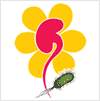Italian Haemolytic Uraemic Syndrome Registry
 The
Italian Haemolytic Uraemic Syndrome (HUS) Registry collects
information on cases of this condition reported across the country.
Data are recorded systematically and continuously. The registry is
operated by the Italian Society of Paediatric Nephrology (Società
Italiana di Nefrologia Pediatrica - SiNePe), in collaboration with
the Istituto Superiore di Sanità (ISS). Cases of the disease are
mainly reported by the paediatric and adult nephrology centres
participating in the surveillance, through the HUS Registry
information system (ISSEU).
The
Italian Haemolytic Uraemic Syndrome (HUS) Registry collects
information on cases of this condition reported across the country.
Data are recorded systematically and continuously. The registry is
operated by the Italian Society of Paediatric Nephrology (Società
Italiana di Nefrologia Pediatrica - SiNePe), in collaboration with
the Istituto Superiore di Sanità (ISS). Cases of the disease are
mainly reported by the paediatric and adult nephrology centres
participating in the surveillance, through the HUS Registry
information system (ISSEU).
Report / 1 December 2020 – 30 November 2021
HUS is considered a rare condition. In Italy, 54 cases were recorded between 1 December 2020 and 30 November 2021. Patients were from 14 different Regions. Of the 54 cases, 53 (98%) were recorded, as expected, in the paediatric population (<15 years of age). Over the last 12 months, the average notification rate for this age group has been 0.64 cases per 100,000 residents, with marked regional variations. The highest rate was observed in Apulia (1.8 cases per 100,000 residents). In this and six other Regions or Autonomous Provinces (Liguria, Emilia-Romagna, Piedmont, Lombardy, Friuli-Venezia Giulia and Autonomous Province of Bolzano), the notification rate was higher than the national average.
The number of HUS cases reported to the Italian Registry in the three months between September and November 2021 was 26.3% lower than expected, dropping to 12 from an average of 16.3 cases for the same period in the previous 10 years. Figures for the six months between December 2020 and May 2021 were also lower than the expected total for that time of year. By contrast, the number of HUS cases reported in June-August 2021 was slightly higher than expected: in August 2021, in particular, it was 18% higher than the average for that month in the previous 10 years.
HUS is known to predominantly affect the paediatric population (<15 years of age), and is often developed in the earliest years of life. The median age of clinical onset among the cases reported between 1 December 2020 and 30 November 2021 and in the previous 10 years was 22 months and 32 months, respectively. Only 1 HUS case was reported in the adult population between 1 December 2020 and 30 November 2021 (2% of the total).
Distribution by sex showed no significant differences between males and females.
Over the last 12 months, Shiga toxin-producing E. coli (STEC) infection has been confirmed by at least one laboratory test in 47 (89%) of the 53 HUS cases who had their stool and/or serum samples taken. Tests were carried out at the ISS National Reference Laboratory for E. coli or other laboratories approved by the Italian HUS Registry [1]. For 35 of the 47 positive cases, the STEC serogroup was also identified: in 80% (N=28) of the HUS cases for which this information was available, one of the top-5 STEC serogroups (O26, O157, O111, O145, O103) was detected. It should be noted that, in the last 12 months, STEC serogroup O80 has been detected in only one HUS case, despite accounting for an increasing number of cases in recent years. This is an important finding because, while the number of affected cases remains low, STEC O80 is still considered highly pathogenic and an emerging serogroup in Europe. In the remaining 12 cases, STEC infection was diagnosed using techniques that did not allow serogroup identification.
- Italian Haemolytic Uraemic Syndrome Registry: Report archive
- Pages about the Italian Haemolytic Uraemic Syndrome (HUS) Registry on EpiCentro and on the ISS website
- Website of the Italian Society of Paediatric Nephrology (SiNePe)
- Website of the HUS Registry Information System (ISSEU)
- Website of the National Reference Laboratory for E.coli of the ISS
- For further information, please contact the HUS Registry by sending an email to: seu@iss.it
Note 1: HUS (Molecular Epidemiology and Public Health Laboratory, University of Bari; Microbiology Laboratory of the Ca’ Granda Ospedale Maggiore General Hospital, Milan)
